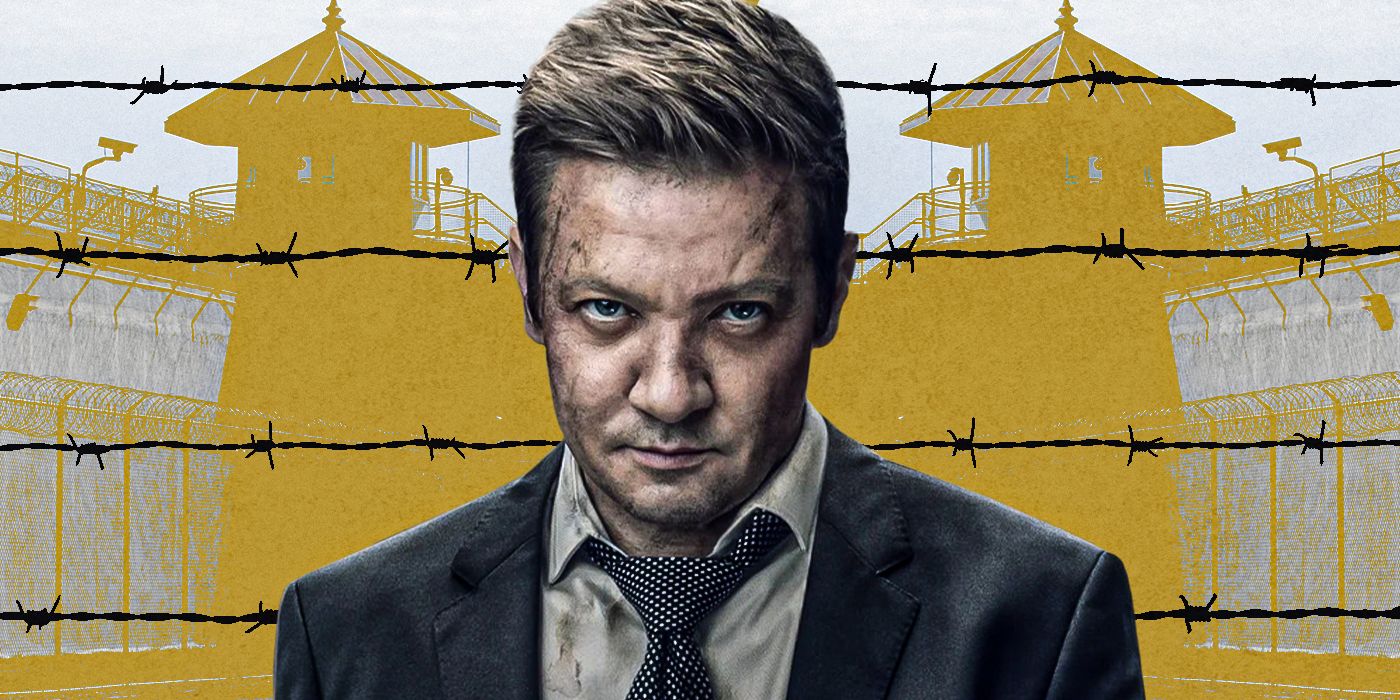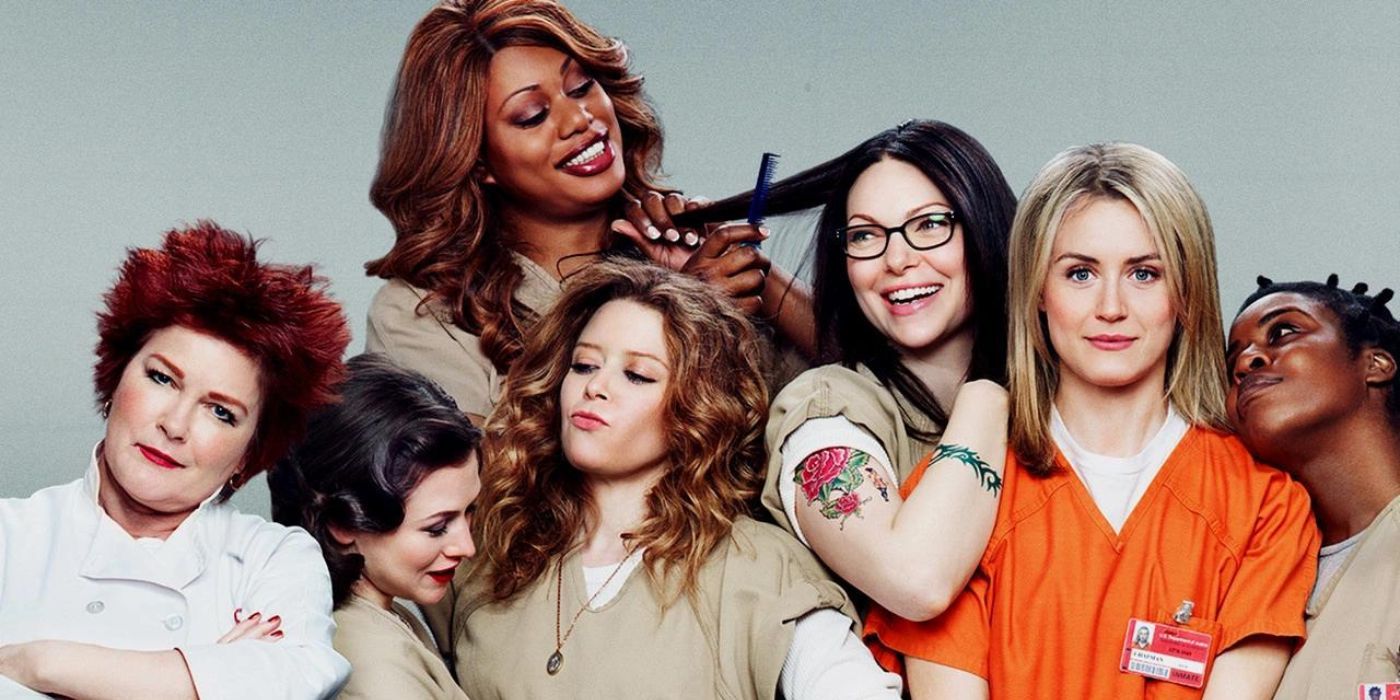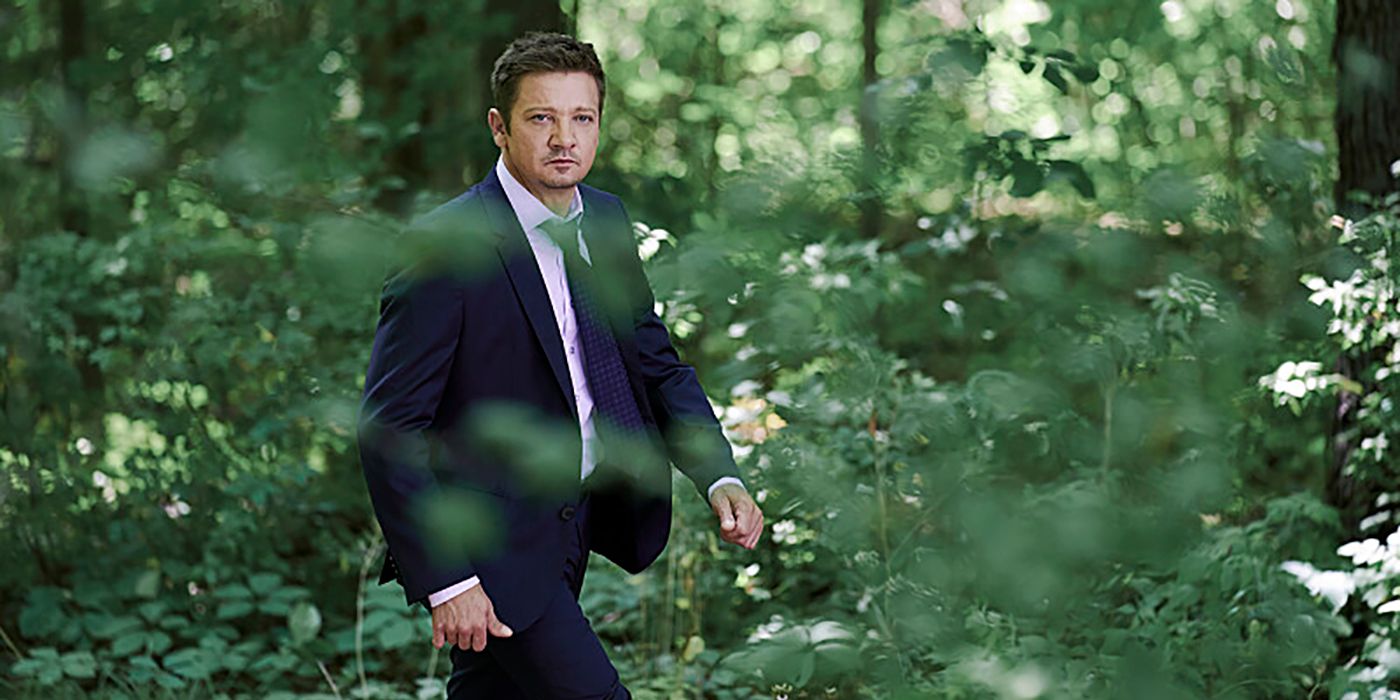This article contains spoilers for Episodes 1 and 2 of Mayor of Kingstown Season 2.
Taylor Sheridan's Mayor of Kingstown, currently streaming on Paramount+, stars Jeremy Renner as a consultant who helps inmates and their families navigate life inside the multiple prisons in a small Michigan town. It's not the first gritty drama to explore the inner workings of a prison. Oz, which inaugurated the golden age of television on HBO, and Orange is the New Black, which marked the beginning of the streaming age, were set behind bars. Less-heralded shows like The Night Of and Wentworth use the same setting.
All of those shows share a critical feature: they center their story around an inmate who, because of their demographics and background, you would not expect to end up in prison. Both Oz and Orange have large, diverse casts, but in both cases our entry point to meeting these characters is a rich white person (Tobias Beecher and Piper Chapman, respectively, played by Lee Tergesen and Taylor Schilling) who, through a series of calamities, has been swallowed by the prison system. Mayor of Kingstown breaks this mold. It forces itself, and its audience, to reckon with the inhumanity of prison without imagining it being inflicted on someone who isn't "supposed" to be there.
Most Prison Shows Use the "Fish Out of Water" Trope
Tom Fontana created Oz during the 1990s, a still-blissful time for a white male writer in his 50s. The show was set in a maximum security prison where violence was a part of life. Fontana wrote or co-wrote (by hand, astonishingly) almost every episode of his show, where the primary source of tension was the endless racial gang war that prison life has come to be associated with. Fontana never really had to defend his ability, as a rich white guy, to responsibly write from all of these perspectives.
By the time Orange is the New Black premiered in 2013, things had changed. The show, set in Litchfield Penitentiary, a minimum security women's prison, featured an equally diverse cast. Jenji Kohan, the creator and showrunner, was often criticized for hiring a mostly white writer's room to tell these stories. She was in the first generation of showrunners asked about the unfairness of long-standing industry practices, and her answers at the time were frequently defensive, even dismissive. But these were questions Tom Fontana was never even asked. Why did he choose a well-off white lawyer as the protagonist for a show about a maximum security prison?
Kohan tried to find an answer for this question for her own show. "Piper was my Trojan Horse. You're not going to go into a network and sell a show on really fascinating tales of black women, and Latina women, and old women and criminals," she said in an NPR interview early in the show's run. "But if you take this white girl, this sort of fish out of water, and you follow her in, you can then expand your world and tell all of those other stories... The girl next door, the cool blonde, is a very easy access point."
A certain amount of skepticism towards these (widely quoted) remarks is needed: blaming faceless network executives for the shows we choose to make, and watch, is taking the easy way out. An "easy access point" for whom? On the other hand, it's true that the casting in both Oz and, especially, Orange is the New Black was radical, creating major roles for actors for whom there had been a scarcity of parts. The diversity behind the camera lagged far behind, but that failing has been consistent across most TV shows. And, because of its diverse cast, there was a particular pressure on Orange to diversify its writer's room, which it did, somewhat, after its fourth season. So, there was an effect that could at least be called Trojan Horse-adjacent.
But whatever the reasons behind it, structuring a prison show around a fish-out-of-water story means it will have certain features. For example, the other prisoners will be necessarily portrayed, at first, as frightening and monstrous. Even if they are later humanized, and become narrative equals, this still validates the un-incarcerated person's fear of inmates as essentially correct. Secondly, because the story inevitably becomes about the transformation of this scared person into a hardened convict, it has the unintended effect of valorizing prison as a place where one experiences profound personal growth, or a meaningful adventure.
All of these shows resist these effects in various ways. But if the essential template always remains the same, the stereotypes gather force from repetition, despite any good intentions of the writers. Both Oz and Orange each conclude their season finales with one last scene for Tobias and Piper. So the Trojan Horse is never really left behind. We're still inside it.
'Mayor of Kingstown' Tries a New Strategy
Taylor Sheridan, similarly to Tom Fontana, has so far written the vast majority of episodes of Mayor of Kingstown himself. And, he's also a rich white guy in his 50s.
Mayor of Kingstown is a prison show. It films in Ontario, specifically to make use of a defunct prison as a filming location. Like Sheridan's other work, it aims for a level of hard-edged realism that would make a Tobias Beecher or Piper Chapman type "unlucky rich person" seem out of place. So there's no fish out of water here. But, it also doesn't center the stories of inmates. Instead, it features an ex-convict. Jeremy Renner's Mike McLusky earned the nickname "mayor" because he's the only person in Kingston who understands and is trusted by both inmates and law enforcement.
Mike is not an inmate, and his storylines rarely take him inside the jail. Instead, he assists the police in dealing with the fallout of crimes that have causes that originate inside the prison but take place outside the walls. In the first season of Mayor of Kingstown, only two of the actors in the main credits, Aiden Gillen and Pha'Rez Lass, played inmates (compared to four who play cops). Neither had much screen time, and Lass, who was excellent in his few appearances, isn't back for Season 2.
Instead, Kingston's prisons occupy the show as a sort of lingering shadow. Many scenes are set in the various prison locations, but we're rarely there in the perspective of an inmate, who are largely kept an emotional distance. That's not only true when we're in the perspective of Mayor of Kingstown's prison guards, who for the most part don't see the inmates as human. It's also the case during the many scenes with Miriam McLusky (Diane Wiest), Mike's well-meaning mother. Miriam teaches a class at the women's prison, but she doesn't have much of a connection with any of her students, and her scenes there usually consist of fruitless lecturing.
It's too soon to tell if this is an audacious approach, or a cop-out. The benefit of keeping prison at a remove is that it's an honest reflection of Sheridan's own distance from it. Rather than presume to write the perspectives of dozens and dozens of inmates, Sheridan keeps the system largely shrouded, which, for many fortunate people, is how it is in real life.
This absence also leaves space for a more gradual and authentic immersion, a potential which the Mayor of Kingstown's second season, at two episodes in, shows some signs of fulfilling. Mayor of Kingstown's first season ended with a massive prison riot, which we learn in Season 2 claimed hundreds of lives. The resulting chaos has left a power vacuum inside Kingston Penitentiary, and the violence of clashing gangs has spilled out onto the street. In order to bring stability, Mike has arranged for the criminal bosses that live outside the jail to be briefly jailed, so that they can get their crews in order. This includes Bunny (Tobi Bamtefa), a peace-minded drug dealer with whom Mike frequently consults. So, for the first time, a character whom we know and care about will be living inside the prison, if briefly.
There's also Mike's day job, counseling the families of inmates. This business is the supposed center of Mayor of Kingstown, but was largely sidelined in Season 1 as Mike was dragged into the Byzantine schemes of various prison power players. In the Season 2 premiere, Mayor of Kingstown acknowledges that this premise was not getting its due. Mike ignores calls from his assistant letting him know that his office was full of clients. But by the time he finally returns from various operatic distractions, they have all gone home. Hopefully, this signals an eventual return to the nuts and bolts of Mike's actual job, which is intriguing on its own. Mayor of Kingstown has the potential to show us life on the inside of a prison, not through the terror of the kind of person whom our society doesn't usually imprison, but the terror of the people it does.
New episodes of Mayor of Kingstown air on Paramount+ every Sunday.



